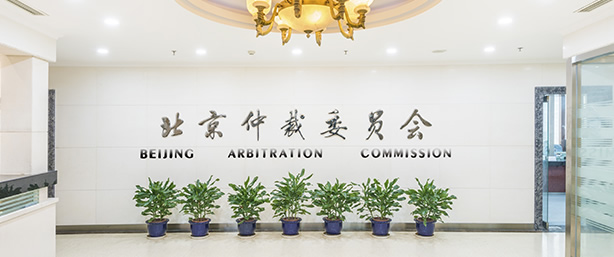
Wang Hongsong, Secretary-General of the Beijing Arbitration Commission
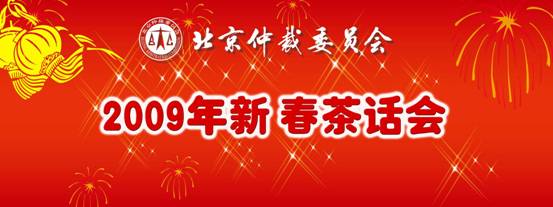
Dear leaders, fellow arbitrators and friends,
On behalf of the commission, I would like to report to you our work in 2008. The report mainly concerns the following seven aspects:
I. Caseload
1. In 2008, the commission accepted a total of 2,057 cases, up 10 percent, or 194 cases more than in 2007.
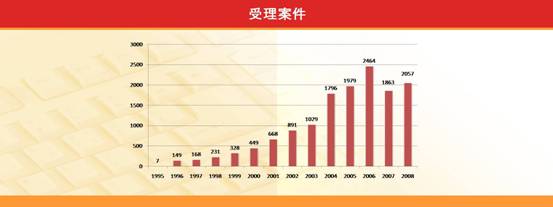
2. The disputed amount totaled 8.7 billion yuan in 2008, up 13 percent, or 1.02 billion yuan more than in 2007.
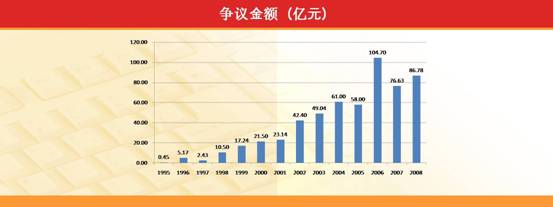
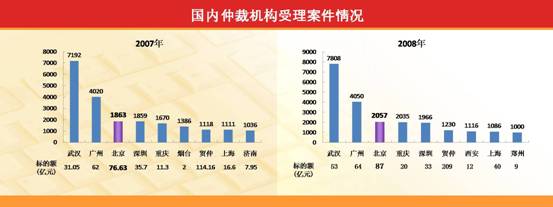
3. Among all the cases accepted in 2008, sales disputes accounted for 40 percent, construction project disputes 19.64 percent, loan and guarantee contract disputes 12.69 percent, entrustment and agency disputes 8.75 percent, lease disputes 6.23 percent, investment and financing disputes 5.4 percent, disputes over new types of contracts 2.38 percent, contractors contract disputes 1.95 percent, technology and information network contract disputes 1.46 percent, intellectual property contract disputes 0.49 percent and other types of disputes, 0.92 percent.
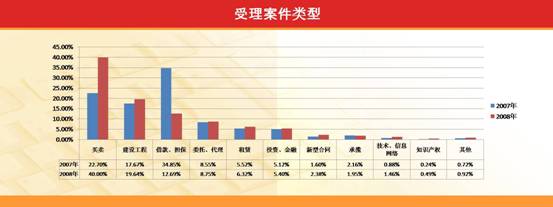
Compared with 2007, sales disputes increased by a large margin, up from 25.98 percent to 40 percent. This is mainly because of the rapid increase in the number of commercial housing sales disputes, which increased from 379 in 2007 to 539 in 2008, and from 20 percent to 26 percent of total sales disputes. Loan and guarantee contract disputes dropped by a large margin, with the number of cases decreasing from 527 in 2007 to 262 in 2008. These disputes decreased from 28.56 percent to 12.73 percent of total cases. The number of construction project disputes increased from 355 in 2007 to 404 in 2008, increasing as a percentage of all cases by 0.75 percentage points. This indicates that our professionalism in handling construction project cases is more and more recognized by the parties, and our development in this field has been very successful.

Among the cases accepted in 2008, 56 cases involved parties from outside the Chinese mainland, up 51.3 percent year on year. Of these, 27 cases involved parties from Hong Kong, Macao and Taiwan, 11 cases involved parties from America, six cases involved parties from Europe, seven cases involved parties from Oceania and eight cases involved parties from other Asian countries. Foreign parties came from 15 countries or regions.
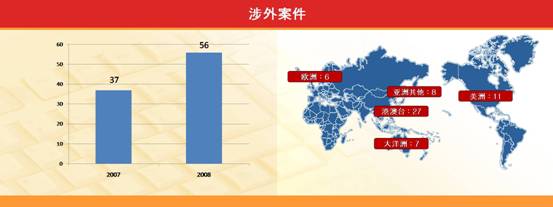
In 57 cases last year, both parties were from outside Beijing, which was three cases fewer, or 2.77 percent less, than in 2007.
4. Since the new mediation rules came into effect on April 1, 2008, we have accepted three mediation cases, of which one was an international commercial case and two were domestic cases. The total disputed amount was 138 million yuan. Two of the three cases reached mediation agreements and the parties were satisfied with the results, with good industrial response. This has encouraged us. We plan to readjust the charging measures this year, reducing the charges and encouraging the parties to choose mediation.

5. In 2008, the commission concluded a total of 2,016 cases, which was 63 cases more than in 2007, with a conclusion rate of 98 percent. Of the total, 1,343 cases were concluded with arbitration awards, accounting for 66.6 percent; 236 cases were concluded by mediation, accounting for 11.7 percent; 385 cases were withdrawn by the parties for reconciliation, accounting for 19 percent; and 52 cases were withdrawn for other reasons, accounting for 2.5 percent.
Compared with 2007, the proportion of cases concluded with arbitration awards increased from 61 percent to 66.6 percent, while the proportion of mediated cases decreased from 12.5 percent to 11.7 percent. This is related to the change in case types we accept, especially group cases.
Among all the cases concluded in 2008, five cases were revoked (or partly revoked) by the peoples court, six cases were re-arbitrated and three were not enforced. Compared with 2007, when eight cases were revoked, the number of revoked cases decreased by three and the number of re-arbitrated cases increased by three.
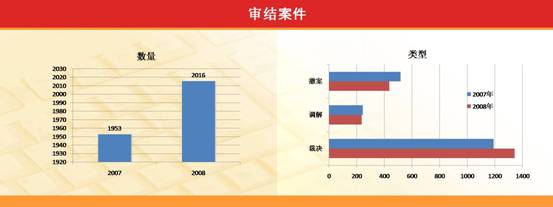
By the end of 2008, the commission had accepted a total of 14,084 cases and concluded 13,177 of them, with a conclusion rate of 93.3 percent. Incomplete statistics showed that among all the concluded cases, 48 cases were revoked by the peoples court, 21 cases were re-arbitrated and 24 were not enforced, with the total number of these cases being less than 7 percent of total concluded cases.
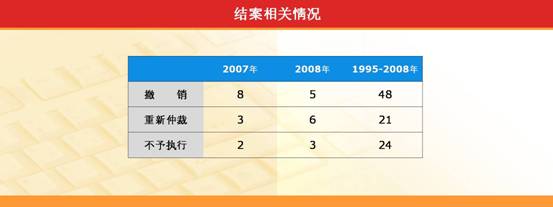
6. In 2008, the average duration of a case from constitution of tribunal to conclusion was 64 days, one day less than in 2007. In 2008, we plan to adopt some new technologies and measures to further shorten the duration of case handling.
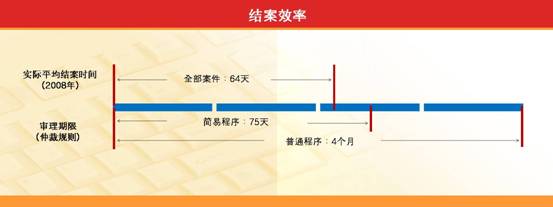
II. Performance
1. In 2008, the commission generated revenue of 65 million yuan, up 4.65 percent, or 2.89 million yuan, year on year. In the meantime, it paid taxes of 12.035 million yuan, up 5.5 percent, or 630,000 yuan, year on year. By the end of 2008, the commission had paid an aggregate of 69.4885 million yuan, 16 times the fiscal allocation by the government when the BAC was first established.
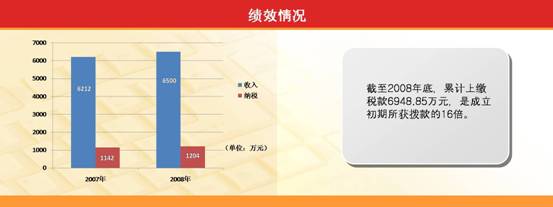
2. In 2008, the office had 34 working staff and three administrative assistants. Of the total, there were 23 secretaries, three financial personnel and eight general service personnel. On average, each secretary concluded 88 cases. The accounting division handled nearly 20,000 financial documents, paid out awards 1,613 times, made 3,327 online bill declarations and issued 252 tax payment receipts. After the earthquake in Wenchuan, the commission received 198 bills of donation and issued 155 tax-exemption receipts. The working staff also assumed responsibility for publicity, training, theoretical research, magazine editing, system reform, international communications, business development, website construction, computer management, software development and other work.

III. Amendments to the Constitution and Measures
1. The Second Meeting of the Fifth Committee of the Beijing Arbitration Commission on February 1, 2008 amended the constitution of the BAC, which is the fourth amendment to the constitution. Major contents of the amendment include:
First, it states the mission and nature of the commission, that is, the BAC is a standing arbitration institution with the mission of providing impartial and efficient alternative dispute resolution services including but not limited to arbitration and mediation. This a repositioning that the BAC has made in accordance with the new situation, transforming itself from a unitary arbitration service provider to a multiple dispute resolution institution for arbitration, mediation and other dispute resolution methods.
Second, it extends the term of office for committee members from three years to five years. After more than 10 years of development, the committee has entered a mature stage, so prolonging the term of office is conducive to stable leadership and avoids wasting time and effort through frequent elections.
Third, it increases the functions of the committee. For example, Article 8 of the constitution stipulates that the principal functions of the committee include to review and adopt annual financial budget reports and financial implementation reports and to audit reports submitted by the Secretary-General; to decide on the items and standards for the expenses of its administrative body; to decide on the standards for the remuneration of arbitrators, including foreign arbitrators, and the proportion of expenses from arbitration fees, etc. This stresses the authority of the committee and enhances its supervision of the office.
Fourth, it makes clear the expenditure items of the committee, strengthens restrictions on expenditures and increases the transparency of financial management.
Fifth, it stipulates that the office, when deciding on the establishment of departments, appointment of cadres, or other important issues concerning the interests of employees, including performance evaluation, discipline, salary, and welfare and social security systems, shall discuss these issues with the labor union, the Party and Youth League and employee representatives; the office shall also seek opinions from employees. This provides provisions on the democratic management by and democratic supervision of the office.
Sixth, it perfects the procedural rules for the committee and clarifies the duty of committee members to attend committee meetings.
Amending the constitution is an important effort for the commission to adhere to the direction of reform and non-governmental orientation and to improve the democratic supervision mechanism. We believe that mechanism is more reliable than people and that only with the establishment of a scientific and rational governance structure, a system of checks and balances and an interest balance system can the commission ensure its long-term development. The BACs exploration in this aspect is not only important for itself, but also for the development of all the arbitration institutions and the arbitration business of the whole country.
2. On August 26, 2008, the Third Meeting of the Fifth Committee of the Beijing Arbitration Commission revised the measures for arbitrator remuneration, largely increasing the standard of arbitrator remuneration, changing the explanation of remuneration calculation and making it easier to understand. The measures came into effect on September 9, 2008.
IV. Publicity and International Communications
1. As for international communications, we held or participated in nine large and medium international or regional arbitration conventions in 2008. We also received more than 20 academic communication events by overseas offices to China, universities, research institutes, arbitration organizations, law firms and overseas student groups from countries such as the United States, Russia, Spain and Italy. Major events include:
(1) On January 15, 2008, we held the Seminar on Development Trends in International Arbitration and Mediation, with the participation of Richard Naimark, Senior Vice President of the International Center for Dispute Resolution (ICDR) of the American Arbitration Association, and Jun Bautista, Director of the ICDR Asia-Pacific Region.
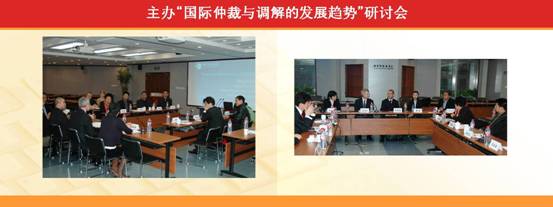
(2) On March 14, 2008, the BAC, the China International Economic and Trade Arbitration Commission and Jones Day Law Firm from the United States jointly held the Seminar on the Latest Developments in International Arbitration. More than 90 people, including officials from arbitration organizations and lawyers from home and abroad, attended the seminar.
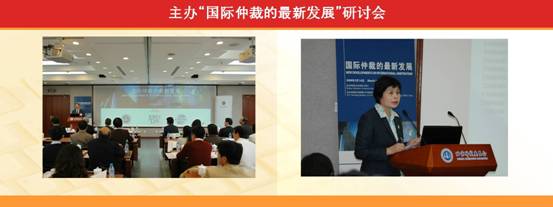
(3) On March 17-20, 2008, the Master of Science in Organization Development program at Pepperdines Graziadio School of Business and Management carried out a case study at the BAC and submitted their research report. This is the third consecutive year that the MSOD program has made a case study and investigation of the BAC. They think that the BAC is a successful model for organization development even in the whole world, and they hope to draw some lessons on organization development through such continual investigation and research. Since most MSOD members have experience acting as senior managers of famous companies or researchers at management consultant companies, we have also benefited a great deal by cooperating and communicating with the program. This is a win-win result and both parties hope to continue such cooperation.
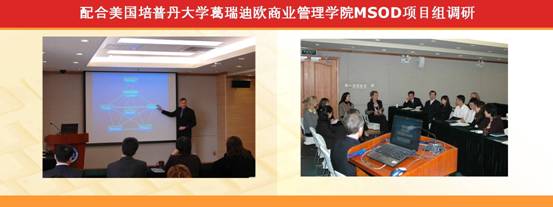
(4) On April 9-10, 2008, we attended the advisory body annual meeting of the Pepperdine School of Law's Straus Institute for Dispute Resolution as well as a seminar hosted by the center titled Negotiation, Mediation and Conflict Management: Progress of the Global Community. More than 100 participants, including officials from famous arbitration and mediation institutions such as the American Arbitration Association, the International Institute for Conflict Prevention and Resolution and Judicial Arbitration and Mediation Services, Inc. (JAMS), senior mediators, justices, lawyers and corporate legal consultants, were present at the meeting. We introduced the BACs independent mediation system and training of mediators. Thomas Stipanowich, Academic Director of the Straus Institute for Dispute Resolution, had a high opinion of the rich experience as well as enthusiasm and capability of the participants. This meeting not only helped American arbitrators, mediators and legal experts better understand the BACs mediation rules, but also deeply impressed upon them the practical experience and learning ability of our arbitrators. After the meeting, the Straus Institute for Dispute Resolution expressed interest in further cooperating with the BAC to launch a mediation service program composed of Chinese and American mediators for Sino-American commercial disputes.
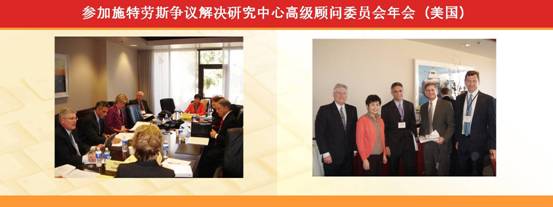
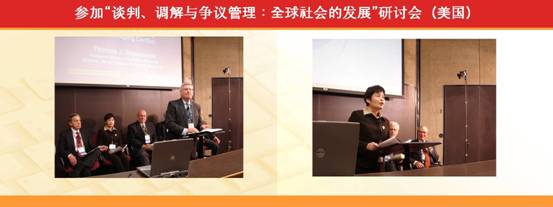
(5) On April 18, 2008, we took part in a seminar on commercial dispute resolution in todays China held in Stockholm, Sweden, where we introduced the new arbitration rules and mediation rules of the BAC. Representatives at this seminar included arbitrators and lawyers from Sweden and other European countries.
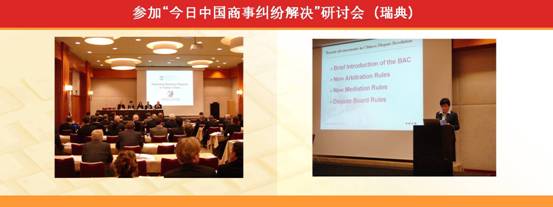
(6) On October 13-14, 2008, we attended the third annual conference on corporate dispute prevention and resolution sponsored by LexisNexis (China), with the participation of more than 100 in-house legal counselors from Asia, the United States and Europe. At the conference, the BAC introduced its new mediation rules and the progress of drafting the Construction Dispute Board Rules. The BACs efforts in establishing this alternative dispute resolution mechanism drew interest from the participants.
(7) On October 27, 2008, the International Commercial Arbitration Forum, Beijing 2008Meeting Commemorating the 50th Anniversary of the New York Convention was held. The forum was hosted by the BAC, co- sponsored by the Chinese Society of International Law and the American Arbitration Association, and supported by the Arbitration Institute of the Stockholm Chamber of Commerce, the Hong Kong International Arbitration Center, the Singapore International Arbitration Center, the Japan Commercial Arbitration Association, the International Bar Association and the Chartered Institute of Arbitrators. Senior officials from the above organizations were present at the forum and delivered speeches. China Central Television, Beijing Daily, Legal Daily, Peoples Court Daily and other media reported on the event. The Shanghai Arbitration Commission and the Guangzhou Arbitration Commission attended the meeting via video conference. More than 100 justices, scholars and legal counselors from courts, universities, foreign chambers of commerce, companies and law firms attended the meeting. It promoted the essentials of the New York Convention and deepened foreigners understanding of implementation of the convention by Chinese courts and the Chinese arbitration system. When interviewed by CCTV, Michael Moser, Chairman of the HKIAC, said that everyone would feel jubilant if China had its own arbitrators, arbitration institutions and related personnel that can serve the international community, and now, China does!
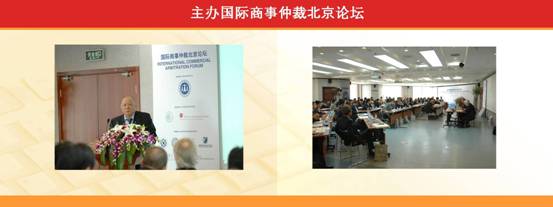
(8) In 2008, we also attended the annual conference of the International Council for Commercial Arbitration and received visits from the Center for Effective Dispute Resolution in London, an American delegation of arbitration and dispute resolution experts and the U.S. Embassy to China, the Thomson Group, the Ural State Law Academy of Russia, the International LLM program at Tsinghua University, JAMS, Berkeley Law School, Studio Legale Chiomenti of Italy, the Court of Arbitration for Sport, the Association for International Arbitration, etc.
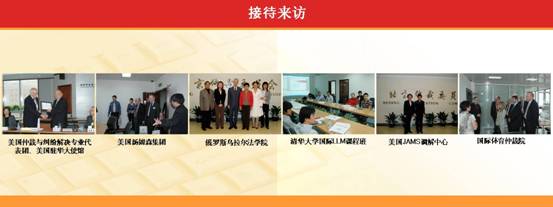
The above-mentioned activities promoted cooperation and communications between the BAC and international counterparts, enhanced our international status and strength and improved our abilities in international communications and hosting large international conventions, which is of great significance to the international development of the BAC.
2. As for publicity, in 2008 we published more than 30 articles in Legal Daily, Peoples Court Daily, China Economic Times and Study Times that promote the arbitration law and arbitration system reform. These articles were also incorporated by online media such as xinhuanet.com, people.com, legaldaily.com, sina.com, chinacourt.org, jcrb.com and china-arbitration.com, amplifying our message.
To promote the establishment of alternative dispute resolution mechanisms, the commission started a column called Understanding and Application of Arbitration Law in Peoples Court Daily. From January to July 2008, we received more than 50 contributed articles and the editors published 14 of them. The articles were regularly incorporated by a dozen professional websites such as chinacourt.org and china-arbitration.com.
In 2008, we published four issues of Beijing Arbitration (No.64-67), publishing 49 articles with more than 500,000 characters. We also strengthened input in publicity, mainly in the following aspects:
(1) From April 2008, we published a total of nine issues of the electronic BAC newsletter in both Chinese and English, collecting and editing more than 60 professional information articles of 70,000 characters or words. The newsletter was sent to arbitrators, arbitration institutions, universities, government agencies and important clients.
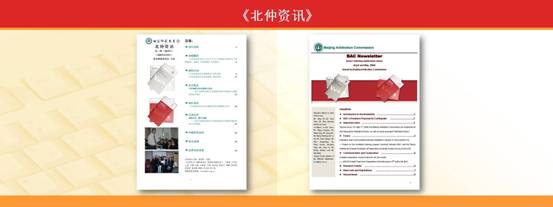
(2) From July 2008, we changed the layout of the Chinese edition of our website, established a French edition and enriched the English edition. A column on arbitration theories and practice was added to the Chinese edition with three sub-columns, namely, amendments to the arbitration law and arbitration system reform, alternative dispute resolution mechanisms and collected works. We publish the BACs management experience, reform measures, work review and reports on the website, recording the BACs history, developing the BACs culture and leading the arbitration system reform. Nearly 300 pages were updated. By the end of 2008, we had published 185 pieces of news and 350 pictures on the website, up 112.64 percent from 2007. In September 2008, we added a laws and regulations database on the homepage by cooperating with Beijing Lawyee Science and Technology Co. Ltd. Using a password, arbitrators can look up more than 460,000 laws, regulations and cases. After the layout change, the number of visitors increased rapidly. The number of visitors to the Chinese edition reached 185,783, up 50.46 percent from 2007; those to the English, Korean and Japanese editions increased by 58.79 percent (45,200 visitors), 27.45 percent (23,534 visitors) and 176.3 percent (28,000 visitors), respectively, over 2007. Even though it wasnt finished until October 2008, the French edition had 12,589 visitors by the end of the year, with an average of 5.3 pages browsed each time.
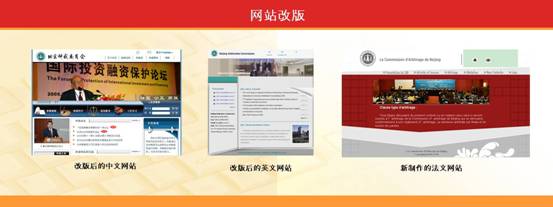
(3) We have re-edited the image film of the commission, finishing the overall design and most of the storyboard.
(4) We have started to establish a standard BAC public information database software system, which is planned to be put into use in 2009.
(5) We have developed the BAC Practical Legal Service System by cooperating with Beijing Lawyee Science and Technology Co. Ltd. and the Empirical Legal Study Center at Peking University. The construction project and real estate database incorporates creative labor and the intellectual fruit of the construction project panel of the arbitrators salon and reflects our advantages in the construction and real estate fields. We will continue our efforts to develop the database with our advantages, regulate market behaviors, lead innovation and reform and promote the harmonious development of society.
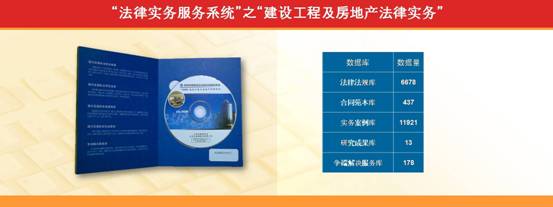
(6) From May to November 2008, the commission carried out promotional activities among law majors at the China University of Political Science and Law, Renmin University of China, Peking University and other universities, such as an awards ceremony for new academic talents at the China University of Political Science and Law held on May 6 and the mock intellectual property commercial arbitration tribunal at Renmin University of China held on May 16. We also delivered a lecture on commercial arbitration theories and practice at the Law School of Peking University. This series of campus events had an audience of more than 10,000 people with positive feedback.
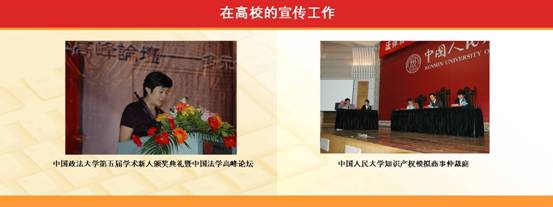
(7) At the outset of 2007, some arbitrators initiated the Development Committee with the aim of promoting business development. The committee has held six regular meetings and planned or assisted a series of promotional activities. For example, at the symposium on arbitration of securities and futures jointly organized by the BAC and the China Securities Regulatory Commission, we invited senior officials from securities, futures and investment fund companies; at the symposium on prevention and resolution of disputes caused by abnormal price fluctuations of building materials jointly held by the commission, Legal Daily and the China Construction Industry Association, more than 100 lawyers and legal counselors from construction companies took part in the discussion, while some arbitrators from Taiwan participated in the meeting via video conference; and for their joint seminar on legal issues for the development of privately offered funds, the commission and the Institute of Law under the Chinese Academy of Social Sciences invited more than 40 experts, scholars, lawyers and investment fund company officials. We also attended the forum on Chinas Reform and the Legal Construction of Chinas Securities Market sponsored by the Securities Law Association of the China Law Society and delivered a speech titled Arbitration and the Development of Chinas Securities Market. In addition, some BAC arbitrators participated in the writing of two books in the collection of BACs alternative dispute resolution and arbitration practice, namely, Finance and Arbitration and Trust and Arbitration, which were almost finished in 2008 and will be published in 2009.
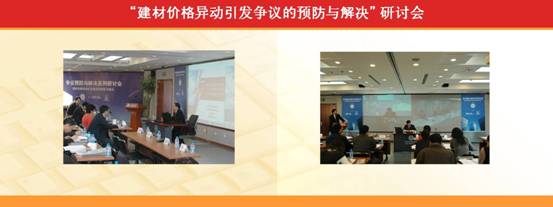
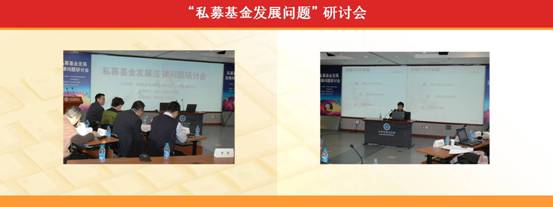
BACs publicity activities in 2008 had clear aims and achieved notable effects. Our publicity ideas, methods and skills have become more mature. We have fully played to our advantages, grasped the right opportunities and outperformed our competitors.
V. Training and Theoretical Research
1. In 2008, the commission stressed training of the arbitrators, which included:
(1) With the assistance of the commission, the Law School of Tsinghua University held a training session and examination for arbitrators in May 2008, in which seven arbitrators and 47 professionals participated. By now seven training sessions have been held, training 352 people, including 128 arbitrators and 224 non-arbitrator professionals. Among them, 84 have been hired as arbitrators. At present, except for arbitrators from Hong Kong, Macao, Taiwan and foreign countries, most of the newly employed arbitrators of the BAC must attend the training and pass the examination.
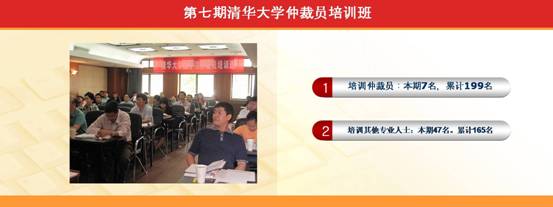
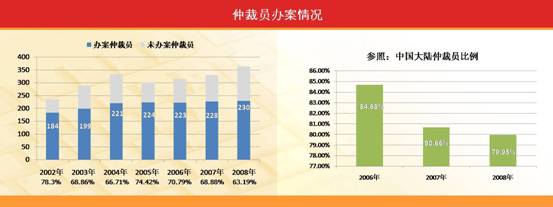
(2) On March 13, 2008, Thomas Stipanowich, Academic Director of the Pepperdine School of Laws Straus Institute for Dispute Resolution and former president of the International Institute for Conflict Prevention and Resolution, gave a one-day training at the BAC on the dispute review board. A total of 57 people, including BAC arbitrators, officials from the National Development and Reform Commission, the Ministry of Housing and Urban-Rural Construction, the State Administration of Radio, Film and Television and the Ministry of Industry and Information Technology as well as experts from domestic large-scale construction companies, attended the training.
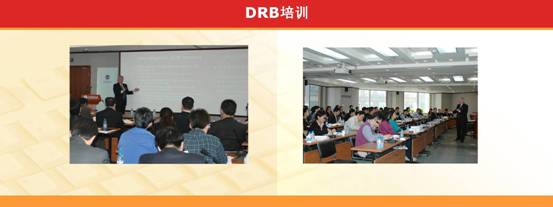
(3) In mid-March and mid-December of 2008, we held trainings for mediators on the implementation of the new mediation rules by cooperating with the Pepperdine School of Law's Straus Institute for Dispute Resolution. Fifty-nine arbitrators and 11 professionals, including judges from the Supreme Peoples Court and Higher Peoples Court of Beijing, attended the six-day training. This was an opportunity for us to introduce advanced foreign ideas and training courses. Judging from the feedback we received from participants and the real effect, the training was successful. Although mediation is a tradition in China, we still lack systematic, all-round and professional studies and summaries of the experience of mediation and have not summed up some rules that can guide the practice. The purpose for us to introduce such courses is to reach the international level in this field as soon as possible. Though we cannot reach such a level now, we should be well prepared and improve our competitiveness.
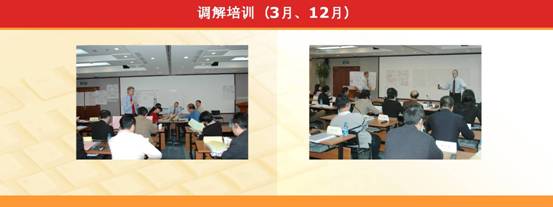
(4) On October 28-30, 2008, we held the first International Commercial Arbitration Training Program by cooperating with the East Asia Branch of the Chartered Institute of Arbitrators, with the participation of 86 arbitrators and other professionals. More than 50 trainees took part in the membership examination of the institute.
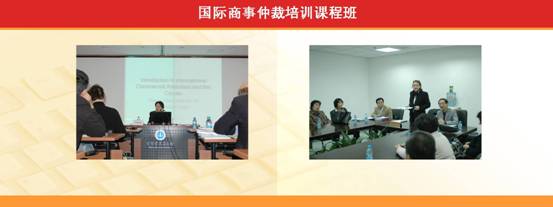
As it takes a long time to bring up people of talent, strengthening our training efforts and increasing the input in talent is key for the BAC to establish our own brand and improve our competitiveness. We are going to be a center of training, so that excellent Chinese talent can gain world fame.
2. In 2008 we held 11 sessions of the arbitrators salon and three professional group discussions, with the participation of nearly 1,000 arbitrators, lawyers, judges, university teachers and students, legal counselors and other professionals. Major salon activities included: a lecture on the application of laws by the Supreme Peoples Court in handling construction engineering disputes given by Feng Xiaoguang from the Supreme Peoples Court, a lecture on the introduction of standard tender documents for construction in China given by arbitrator Feng Zhixing, a lecture on the judgment of corporate disputes and frontier issues of stock transfer disputes of limited-liability companies given by Professor Liu Junhai, a lecture on the citation of evidence in international arbitration cases given by Professor Philip Yang, a lecture on theoretical disputes and practical problems of penalty given by Professor Han Shiyuan, and a lecture on the interest issue in international trade arbitration given by Professor Lu Song.

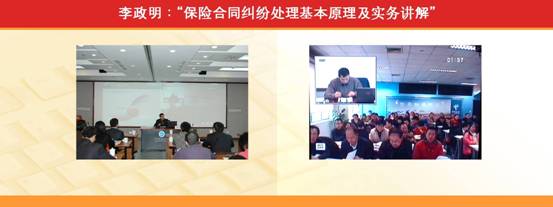
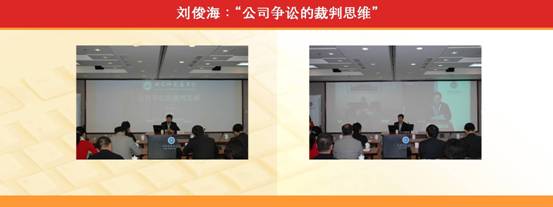
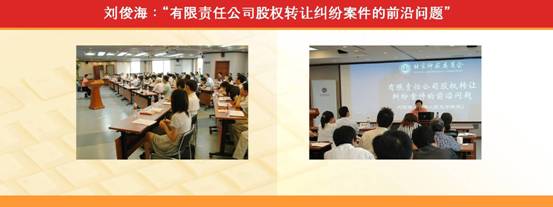
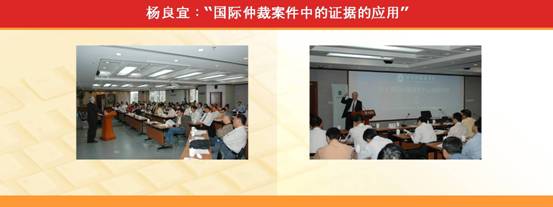
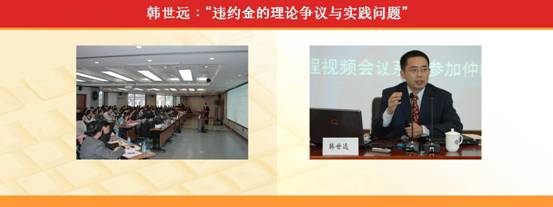
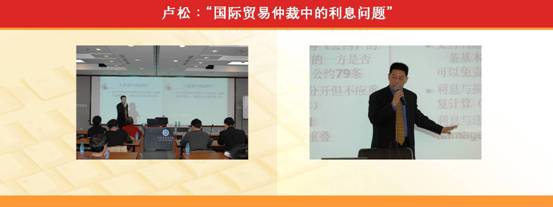
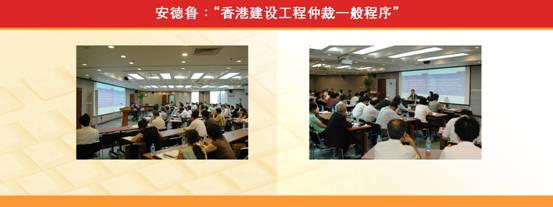
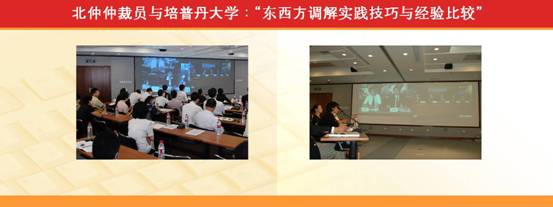
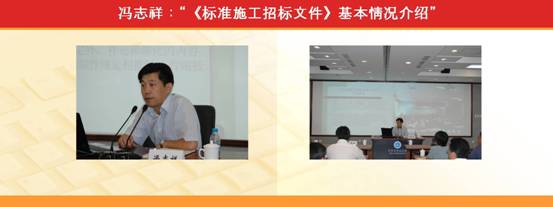
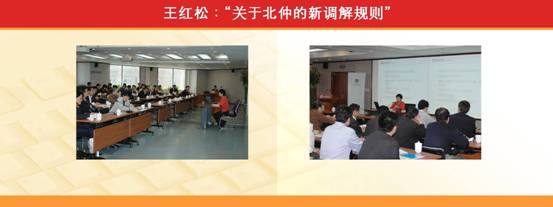
These salon sessions focus on practice and are closely related to real cases, being welcomed by arbitrators and other professionals. The Chinese Arbitration Association, Taipei and arbitration institutions in Shanghai, Guangzhou, Nantong and Zibo also took part in the sessions via video conference.
3. Research in 2008 mainly focused on exploration of alternative dispute resolution mechanisms and promotion of system reform of arbitration institutions. Major work included:
(1) After seeking opinions from arbitrators, construction engineering experts and industrial authorities, the BAC drafted the Construction Dispute Board Rules of the Beijing Arbitration Commission (Draft) and supporting documents such as the Ethical Standards for Construction Dispute Board Experts and the charging rules.
The dispute review board (DRB), which has been popular worldwide as a construction dispute resolution mechanism since the 1970s and 1980s, is a method of solving construction disputes in a timely manner and preventing conflicts from intensifying and causing project delays through early intervention by the dispute review board. The World Bank has incorporated this method into its tender documents. In November 2007, the National Development and Reform Commission, the Ministry of Housing and Urban-Rural Construction, the Ministry of Industry and Information Technology and six other departments jointly released the Trial Measures for Standard Construction Tender Qualification Pre-Examination Documents and Standard Construction Tender Documents (effective as of May 5, 2008), which incorporate DRB. However, since the review clauses of these measures are not too general to be implemented, we have formulated our own rules in order to offer practical guidelines to the parties in choosing DRB. This is another innovative effort of the BAC in alternative dispute resolution since the formulation of separate mediation rules. The BAC has made continuous efforts in reform and innovation, which is the impetus for the commission to progress.
(2) On September 25-26, 2008, the commission organized arbitrators, experts and scholars to attend the Third China Arbitration Forum initiated by Professor Liang Huixing and sponsored by the Law School of Hunan University. We delivered speeches and wrote articles on independent revenue and expenditure in arbitration charging, the nature of the properties of arbitration institutions, the legal person status of arbitration institutions and other significant theoretical and practical topics related to arbitration system reform. These speeches and articles have played an active role in clearing up misunderstandings and promoting system reform of arbitration institutions.
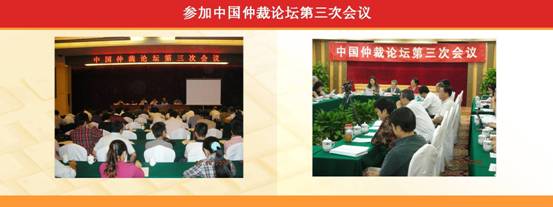
(3) On October 18-19, 2008, the commission held the 2008 Annual Conference of the Chinese Society of Private International Law jointly with the Faculty of International Law at the China University of Political Science and Law, the China International Economic and Trade Arbitration Commission and China University of Political Science and Law Press. We delivered a keynote speech titled Several Issues in the Development of Arbitration, calling on experts and scholars to pay attention to major theoretical and practical problems of arbitration, adhere to reform and oppose regression. Nearly 180 participants from academic and practical circles were present at the annual conference.
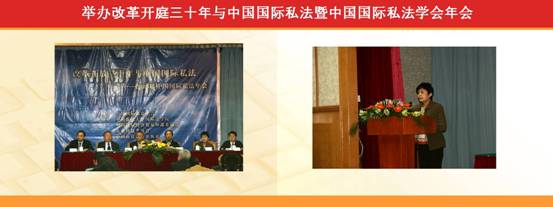
(4) On November 14, 2008, we attended an international seminar on alternative dispute resolution mechanisms sponsored by the Supreme Peoples Court and supported by the Asian Development Bank, the Li Ka Shing Foundation and the Cheung Kong Center for Negotiation and Dispute Resolution of Shantou University. We delivered a keynote speech on how to establish a sound alternative dispute resolution mechanism. More than 60 court officials, judges and scholars from home and abroad attended the seminar. Previously, as a member of the research program on Establishing and Perfecting an Alternative Dispute Resolution Mechanism launched by the Supreme Peoples Court, the commission had carried out investigation and research work on the commercial arbitration topic, publishing a research report in April 2008.
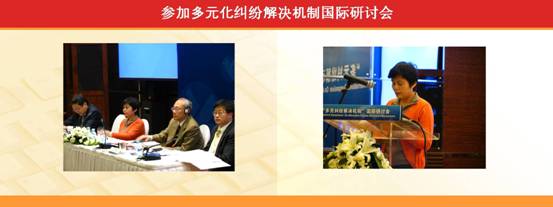
3. We have strengthened communications with courts in Beijing. Particularly, in handling group cases, we contacted related peoples courts, so that many cases were solved properly.
VI. Public Service
As a socially responsible institution, the commission has made many donations to education. In 2008, we sponsored activities for new academic talent at the China University of Political Science and Law. After the earthquake in Wenchuan, we immediately called on working staff and arbitrators to donate to the disaster-affected area. By May 21, 2008, our donations totaled 1,054,429.66 yuan and $200. Arbitrators from Taiwan, South Korea, the United States, France and Germany also made donations. Although they were traveling in China or even in foreign countries at the time, arbitrators still sent their donations to the commission by various ways. On May 21, 2008, the commission decided, after discussion by the Development Committee, to donate 150,000 yuan and 100,000 yuan, respectively, to the heavily affected Mianyang Arbitration Commission and Deyang Arbitration Commission. The other donations were used to rebuild schools in the disaster-affected area. The construction work was entrusted to building companies with good reputation and ample strength in order to ensure the quality of school buildings. It was the first time that the commission had called for donations, receiving an enthusiastic response from arbitrators and setting a record in the amount of donations and number of participants. This not only shows the noble humanistic sentiments and social responsibility of the arbitrators, but also reflects the cohesive force and teamwork of the commission as a whole.
In December 2008, we got the news that the reconstruction of Yuguan Village Primary School in Jiangyou, Sichuan Province, which was aided by the BAC, was progressing smoothly and would hopefully be completed before the Spring Festival of 2009.
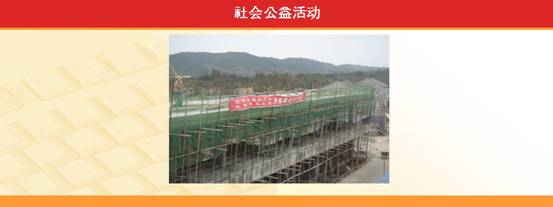
VII. Office Development
1. In 2008, the office hired two new secretaries. The office also trained working staff on office software by professional institutions. More than 30 people took part in the training and passed the certificate examination for Microsoft Office master level.
2. We have deepened system reform of the secretariat, carrying out performance assessments of division chiefs. Through democratic procedures, we elected three chiefs of the secretariat, namely, Peng Lisong, Ding Jianyong and Chen Cong. The new leadership team is young but vigorous, which will bring new strength to the BAC office.
3, We have improved the internal management mechanism, revising the intern management system, the division chief assessment and election system, the staff attendance management system, the staff overtime system, etc.
4. As for computer information management, we have done the following work:
(1) We have developed a mediation process system to meet the demands of handling cases since the new mediation rules took effect on April 1, 2008.
(2) We have updated the cell phone message platform so that the system can automatically identify the arbitrators who reply to the messages.
(3) We have updated the operating system and office software to Windows XP and Office 2003.
(4) We have improved our case processing system so that it is more user-friendly when it comes to case classification and information reference.
(5) We have developed an information management system to facilitate contact with industrial insiders.
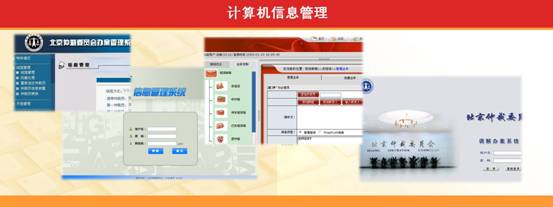
In short, the BAC made great progress in various aspects in 2008. The biggest progress lies in peoples minds---the sense of identity and support for the BAC and the arbitration work by our arbitrators from the bottom of their hearts. In 2008, many activities were directly planned and carried out by our arbitrators and many fruits accumulated efforts, wisdom and talent of the arbitrators. Without the aid and support of our arbitrators, it would have been impossible for the BAC to achieve its present level of progress and development. It is the encouragement, trust and high expectations from arbitrators, committee members and friends from various circles that make us advance and outdo ourselves. Here I, on behalf of the working staff of the office, express my sincere gratitude to all of our arbitrators, leaders and friends!
Thirteen years have passed since the establishment of the BAC. Thanks to great effort over the years, the commission is now well established and flourishing. It attracts the most remarkable talent, like a magnetic field; it bears our hope, glory and dreams, like an ark; it guards our conscience, values and beliefs, like a home for our hearts. We believe that as long as we continue our efforts and never give up, we will get better and better.
Best wishes to all of you!
